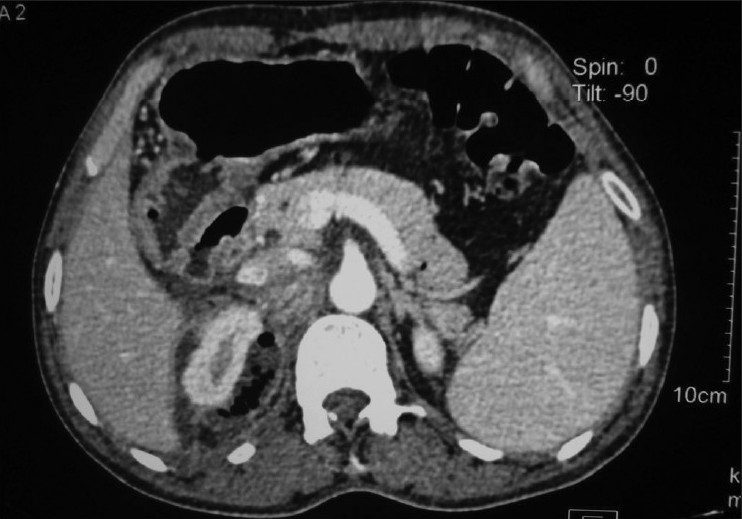Playlist
Show Playlist
Hide Playlist
Pyelonephritis (Kidney Infection) and Perinephric Abscess: Definition, Epidemiology & Etiology
-
Slides PyelonephritisPerinephricAbscess InfectiousDiseases.pdf
-
Download Lecture Overview
00:02 In our discussions of urinary tract infections we turn now to pyelonephritis and perinephric abscess. 00:11 So pyelonephritis would be a renal parenchymal infection producing a clinical syndrome characterized by fever, flank pain, and tenderness, usually along with symptoms of urgency, dysuria, frequency, the same symptoms of a lower urinary tract infection. 00:31 A perinephric abscess is an uncommon complication of urinary tract infection, usually as a result of obstruction. 00:41 Occasionally, it's a complication of bacteremia from a remote focus of infection. 00:48 And I want you to hold that thought until we get to staphylococcus. 00:53 Women are affected by pyelonephritis and perinephric abscess far more than men. 00:59 200,000 adults are admitted for acute renal infection every year. 01:06 And as far as the epidemiology goes, the risk factors for women are similar to the risk factors for acute cystitis. 01:16 And those are sexual intercourse, a history of previous urinary tract infections, the post-menopausal state and that's because post menopausal women have prevalence of carrying organisms in the urinary tract at about the level of 10%, pregnancy, which is a normal type of urinary obstruction and then other types of anatomic or functional abnormalities of the urinary tract predispose women. 01:50 Among men, urinary tract infections are often quite complicated and it's frequently associated with urologic abnormalities. 02:00 Men who have sex with men and anal insertive intercourse are predisposed to kidney infections. 02:10 And then either gender are predisposed by urinary tract instrumentation by having diabetes or by being immunosuppressed. 02:21 Once again, E. coli is responsible for most of this infection -- 80%. 02:29 But interestingly, we have many different strains of E.coli in our colonic flora, yet only a few serogroups caused most of the infections, and they are referred to as uropathogenic E. coli. 02:46 So what's different about them? They possess virulence factors that will enchance colonization of not only the lower urinary tract but they are able to invade the upper urinary tract. 03:00 Most other fecal E. coli do not have these virulence factors. 03:05 One of the most important are p-fimbriae. 03:09 This is the fringe around the organisms which attach to galactose alpha (1-4) galactose-containing receptors on urothelial cells. 03:21 These sugars coat uroepithelial cells and these are referred to also as mannose-resistant. 03:31 In other words, they may bind to Tamm-Horsfall or uromodulin, but they're still able to attack the mucosa of the urinary tract. 03:45 Furthermore, this E. coli have cytotoxins like alpha-hemolysin which can actually destroy or impair the function of urothelial cells. 03:57 And, of course, that's going to enhance the virulence of the organism for not only cystitis but pyelonephritis and extraintestinal manifestations of urinary tract infections and can lead to hemolytic anemia as the name implies. 04:14 These organisms also have the ability to leech iron out of the sytem by a protein called aerobactin which leeches away iron and microorganisms need iron to reproduce. 04:30 There are some other causative organisms among the 20% that are not E. coli like Proteus, Pseudomonas aeruginosa, Klebsiella pneumaniae, Enterobacter, Resistant E. coli, Enterococci, especially in elderly men and Group B streptococcus occasionally especially in diabetics or immuno-compromised patients.
About the Lecture
The lecture Pyelonephritis (Kidney Infection) and Perinephric Abscess: Definition, Epidemiology & Etiology by John Fisher, MD is from the course Urinary Tract Infections. It contains the following chapters:
- Pyelonephritis and Perinephric Abscess
- Pyelonephritis and Perinephric Abscess – Etiology
Included Quiz Questions
Which of the following is NOT a risk factor for pyelonephritis?
- Normal anatomy of the urinary tract
- Diabetes mellitus
- HIV infection
- Urinary tract instrumentation
Which of the following is an important surface virulence factor of uropathogenic Escherichia coli?
- P fimbriae
- α-Haemolysin
- Aerobactin
- Cytolysin A
- Enterobactin
Which of the following best defines pyelonephritis?
- Infection of the kidneys/upper urinary tract
- Infection of the entire urinary tract
- Cystitis complicated by fever
- Perirenal abscess formation
- Urinary tract infection with obstruction
Which of the following is an important risk factor for group B streptococcus urinary tract infection?
- Diabetes mellitus
- Men who have sex with men
- Premenopausal state
- Postmenopausal state
- Recurrent cystitis
Customer reviews
5,0 of 5 stars
| 5 Stars |
|
5 |
| 4 Stars |
|
0 |
| 3 Stars |
|
0 |
| 2 Stars |
|
0 |
| 1 Star |
|
0 |






